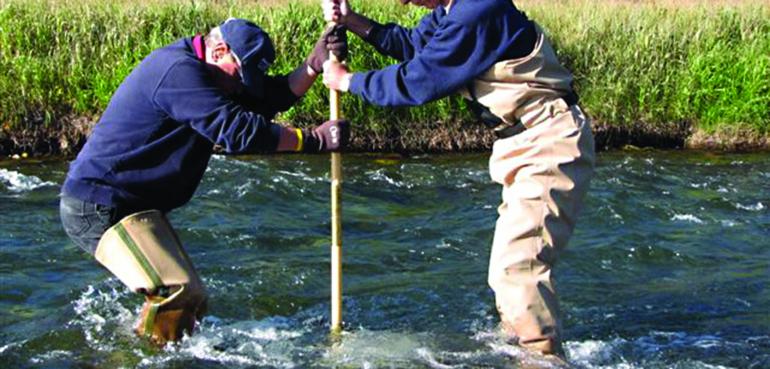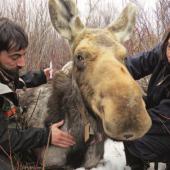River Stewards
Protecting Montana's rivers.
According to Montana Fish, Wildlife & Parks, more than 577,633 fishing licenses were sold in 2014. With all that pressure, it’s important to give back—and that’s what several area nonprofits are doing. Take a look at their work below and learn how you can join the effort.
Gallatin River
The newly renamed Gallatin River Task Force (formerly Blue Water Task Force) works to preserve the Gallatin watershed by creating a sense of community involvement in the care and stewardship of the river. GRTF collects data four times a year to assess and track the health of the river. The organization also works closely with local schools to educate kids about water conservation. You can join in the fun by volunteering in September with their Watershed Restoration program or attending the annual fly-fishing festival in Big Sky’s Town Center, July 25-26. Find out more at bluewatertaskforce.org.
Big Hole River
Home to 126 different animal and plant species, the Big Hole provides precious habitat for the last wild and self-sustaining population of arctic grayling in the lower 48. Working to protect this 153-mile-long, free-flowing river, the Big Hole River Foundation does educational outreach, research programs, and conservation projects. Join the BHRF at their annual Big Hole River Day July 18 in Melrose, or donate merchandise, such as artwork or gear, for auction. For other volunteering opportunities, visit bhrf.org.
Madison River
The Madison River Foundation employs “Boots in the Water” projects, like planting willows along the riverbank to restore native vegetation and spearheading the largest wetlands restoration project in Montana: repairing the O’Dell Creek headwaters. Become a steward of the Madison by joining the MRF’s “steam team,” a group of volunteer citizen-scientists trained in water-quality monitoring. You’ll have the chance to collect biological, chemical, and physical data on six local streams, helping to protect more than 80 miles of water. Check them out at madisonriverfoundation.org.
Yellowstone River
Behavior change, according to the Invasive Species Action Network, is the key to reducing the human-caused spread of invasive species, particularly aquatic ones. To achieve this difficult mission, ISAN has a host of programs, such as the riparian weed project, which brings together those who love our river systems in an effort to reduce and control the impacts of noxious weeds on Montana rivers. Their work on mapping weed types and growth patterns on the upper Yellowstone River is one of our most valuable resources as conscientious anglers. You can help the Livingston-based ISAN “stamp out spread” by promoting boot- and boat-cleaning at local fly shops, or by partnering with their education services and encouraging their “watershed warrior” program for youth. Find out more at stopans.org.















